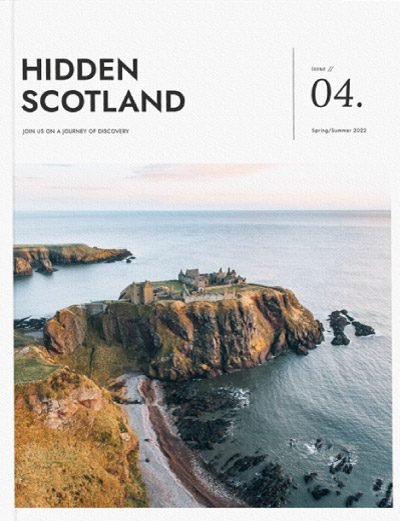Sandwiched between Strathberg Bay to the north and Rattray Beach to the south, Rattray Head is renowned as one of the most wild and secluded places on the coast of Aberdeenshire. The beach is astoundingly long, stretching for 17 miles from Peterhead to St Combs, with wind-sculpted dunes that reach a staggering 100 feet in height! The remnants of several shipwrecks are still visible on the beach; legend tells how shipowners would deliberately ground their vessels on the rocks, as part of a primitive insurance fraud.
However, despite its serene outlook – particularly notable on calm summer days, when the deep turquoise waters lap gently at the unspoilt, golden sands – Rattray Head Beach has always posed a hidden danger to passing ships. The most famous landmark along this coastline, the Rattray Head Lighthouse, is, unusually, situated a short distance offshore, accessible only by a low-lying causeway that, at high tide, is consumed by the sea. Constructed in 1895, the lighthouse became self-automated a century later and, today, remains a distinctive sight along this most picturesque stretch of Aberdeenshire coastline.
GETTING THERE AND OTHER IMPORTANT INFORMATION
Arriving by car
Rattray Head is accessed via the A90, 15 minutes north of Peterhead, and approximately one hour from the centre of Aberdeen.
A small car park is available in Rattray, with a short walk through the sand dunes to the beach offering impressive views of the coast and lighthouse.
Arriving by bus
From Peterhead, take Stagecoach service 69/69B to Fraserburgh, alighting at St Fergus, Strathbeg House Hotel (the journey time is approximately 22 minutes). Rattray Head Beach is then a 3.5-mile walk.
Arriving on foot
Rattray Head Beach can be accessed along coastal walks from St Combs and Peterhead, with most of the distance covering sandy beach (some areas inland may be wet, so appropriate footwear is required). Rattray Head can also be incorporated into shorter walks in the area, such as the circular walk from the ruined chapel adjacent to the Loch of Strathbeg (a small parking area is available at the chapel).
THINGS TO SEE AND DO NEARBY
PLACES TO EAT AND DRINK
With St Combs, Fraserburgh, and Peterhead all within easy reach, Rattray Head Beach is well-placed for a variety of eateries to satisfy every appetite.
For a traditional afternoon tea, the award-winning Nooks and Crannies in Fraserburgh is unmissable, with outstanding personal service and a delightful range of savouries and sweet treats. The proprietor goes the extra mile to accommodate dietary requirements and, if you aren’t able to dine in, a takeaway afternoon tea is also available.
For centuries, the North Sea has supplied Scotland with daily catches of fresh fish, so a visit to a seafood restaurant is a must to imbibe the history and culture of Aberdeenshire. Fraserburgh offers The Captain’s Table and Findlay’s Fish Bar, amongst others, while The Front Room at the Palace Hotel in Peterhead also specialises in seafood, including king scallops, rock oysters, and pan-seared cod.
DID YOU KNOW…?
The nearby medieval Castle of Rattray was engulfed by an immense sandstorm in 1720 and, to this day, has never been dug out. Today, the castle remains hidden beneath a grassy mound.
